Who is this mother who tricks her own daughter in a no-win situation? She agrees to take her freedom, calls her curse, and finally wants her dead? I am talking about the omnipotent queen who did not stop at nothing for her sake.
When the French princess Margot was born in 1553, her mother, Catherine de Medici, was not particularly concerned about this fact. She hadn't even mentioned it in any of her numerous letters.
Seven years later, Margot's eldest brother, King Francis II, fell ill. Catherine began to plot to seize power while there was still hope for his recovery, then put the plan into effect a few days before his death. Admittedly, the adolescent Charles IX was enthroned, but the queen mother played the first fiddle from then on. As Nancy Goldstone writes in the book "Queen's rivals":
maternal devotion meant addressing in all (...) official documents to her instead of the king (...), and even sleeping in the bedroom of a ten-year-old son at night to guarantee that no one will have access to the king without her prior knowledge and approval.
The king could not make any decisions without his mother. Lack of influence on his own life caused frustration attacks in sickly Karol. Especially that Katarzyna favored another of her sons, Henry (the future king of Poland) , and she wasn't hiding it at all.
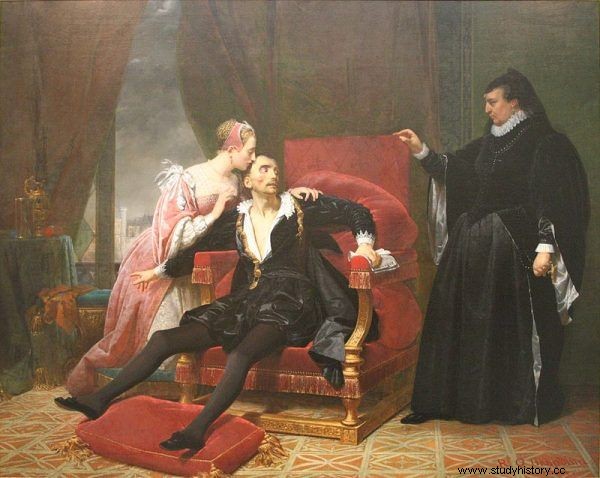
Charles IX was overwhelmingly influenced by his mother throughout his reign. In the picture, the dying king in the arms of his wife, Elizabeth of Austria, even now under the watchful eye of Catherine de Medici. A painting by Raymond Monvoisin from 1834 (source:public domain).
Scared daughter
Margot barely dared to speak in front of her overwhelming mother. As soon as Catherine looked at her, the girl trembled with fear. When she was eight, Charles IX threatened to have her flogged by her mother if she did not use the Protestant prayer books. Małgorzata stood up for the first time. She stated that she would endure flogging and even death sooner than eternal damnation.
Mother absolutely wanted Margot to be queen. Like her sons, she had a match with the elderly heirs of the crowns, her daughter raved about the underdeveloped Infant Charles, the king of Portugal, Sebastian, who was terrified of women, who was a quarter of a century older King of Spain, Philip II, and the eccentric Archduke Rudolph.
It is not surprising that Małgorzata did not want to leave the matter of marriage in the hands of her mother. The more that she fell in love with Prince Guise. Was there anything more between them? It's hard to say. But when the monarch and Catherine found out about the plans of the adult princess in 1570, they sprinkled her over the sour apple. The queen mother even called it a… nightbag.
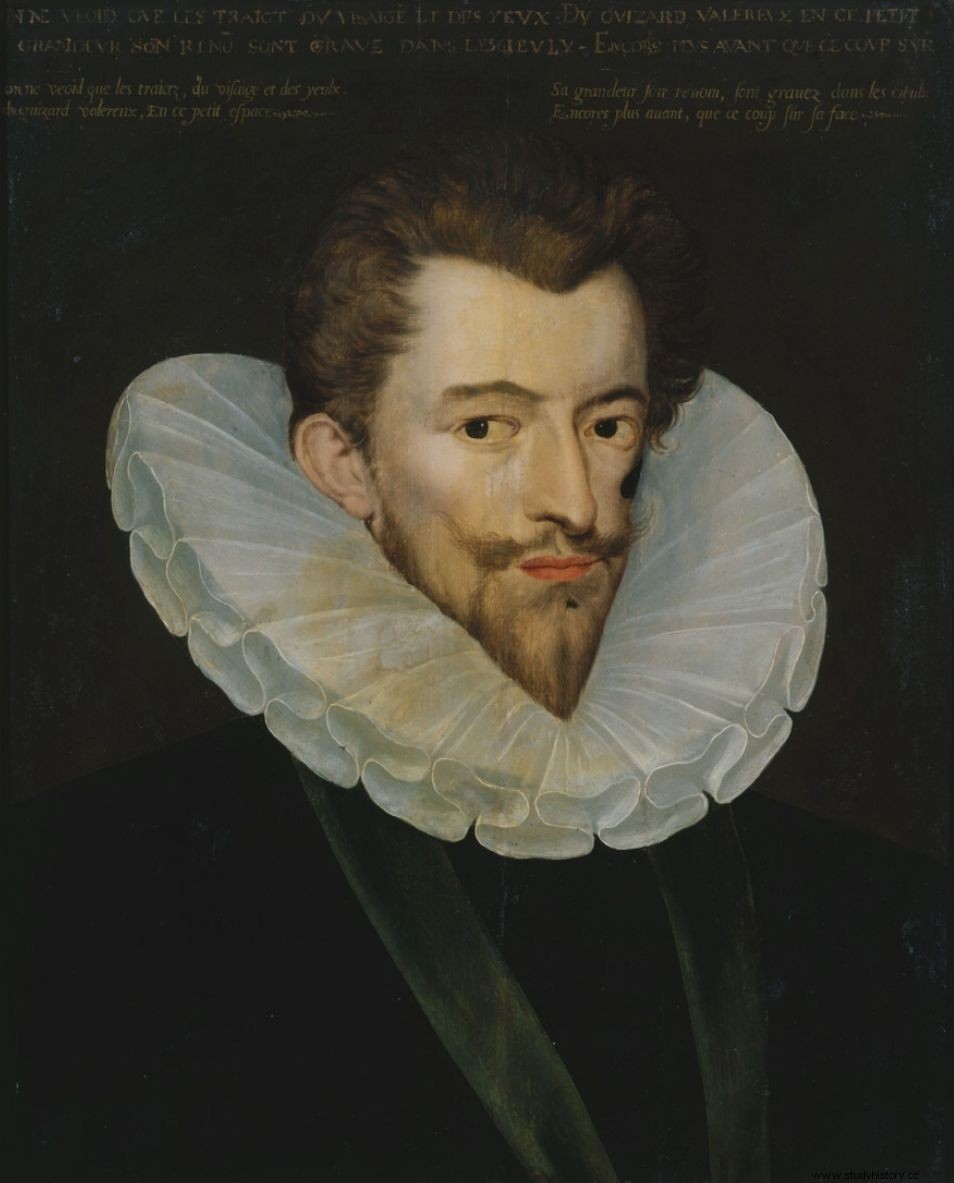
It is hardly surprising that Margot preferred the handsome Prince Henry de Guise to foreign, imperfect rulers. An image of 30-year-old Henryk from his era (photo L. Fdez, license CC BY-SA 2.1 es).
Bloody Wedding
In the end, Medici chose to marry her daughter to the Huguenot king of tiny Navarre, Henry Bourbon. A staunch Catholic, Margot believed that by marrying a Protestant ruler, she would be doomed to a life of mortal sin. She sobbed at her mother's feet, begging for mercy. Catherine only said that if she did not take this wedding, as a punishment she would "make her the most miserable lady in the kingdom."
On Saturday evening, after the forced ceremony, the court was getting ready for the great slaughter of Huguenots - and thus Protestants - which went down in history as St. Bartholomew. The causes of the murder are still not entirely clear, but there are many indications that the Queen Mother played a contributing role.
That same evening, Małgorzata visited Sister Klaudia in her mother's bedroom. As she recalled:“my mother, (...) as soon as she saw me, she told me to go to bed. As I started to leave, my sister grabbed my hand and stopped me, drowning in tears at the same time. »For God's sake«, she exclaimed, »stay still in this chamber!« ”.
Katarzyna, however, chased her daughter away. Terrified, Margot waited for the worst during the night she spent with her husband. In the morning she found herself in the center of hell. One of the Protestants burst into her room, bleeding blood. Later, another, pursued by archers, fell dead at her feet. The mother did not hesitate to expose her daughter to the risk of death. As we read in "Queen's rivals":
Klaudia was right:if the Huguenots discovered the Catholic plot in time, her husband's entourage would assume he was a spy and would in all likelihood take revenge on her.
Trapped and hopeless
The King of Navarre was not safe even after the fateful night. Katarzyna, who forced a relationship herself, now lured her daughter with freeing her from her unwanted husband. But Margot understood that divorce would mean Henry's death sentence. She sacrificed her happiness to save an unloved spouse.
Małgorzata and her husband were imprisoned at the court. At that time, Margot's alliance with her younger brother Franciszek, whose mother was also neglecting, began. Anyway, he soon joined his sister and brother-in-law.
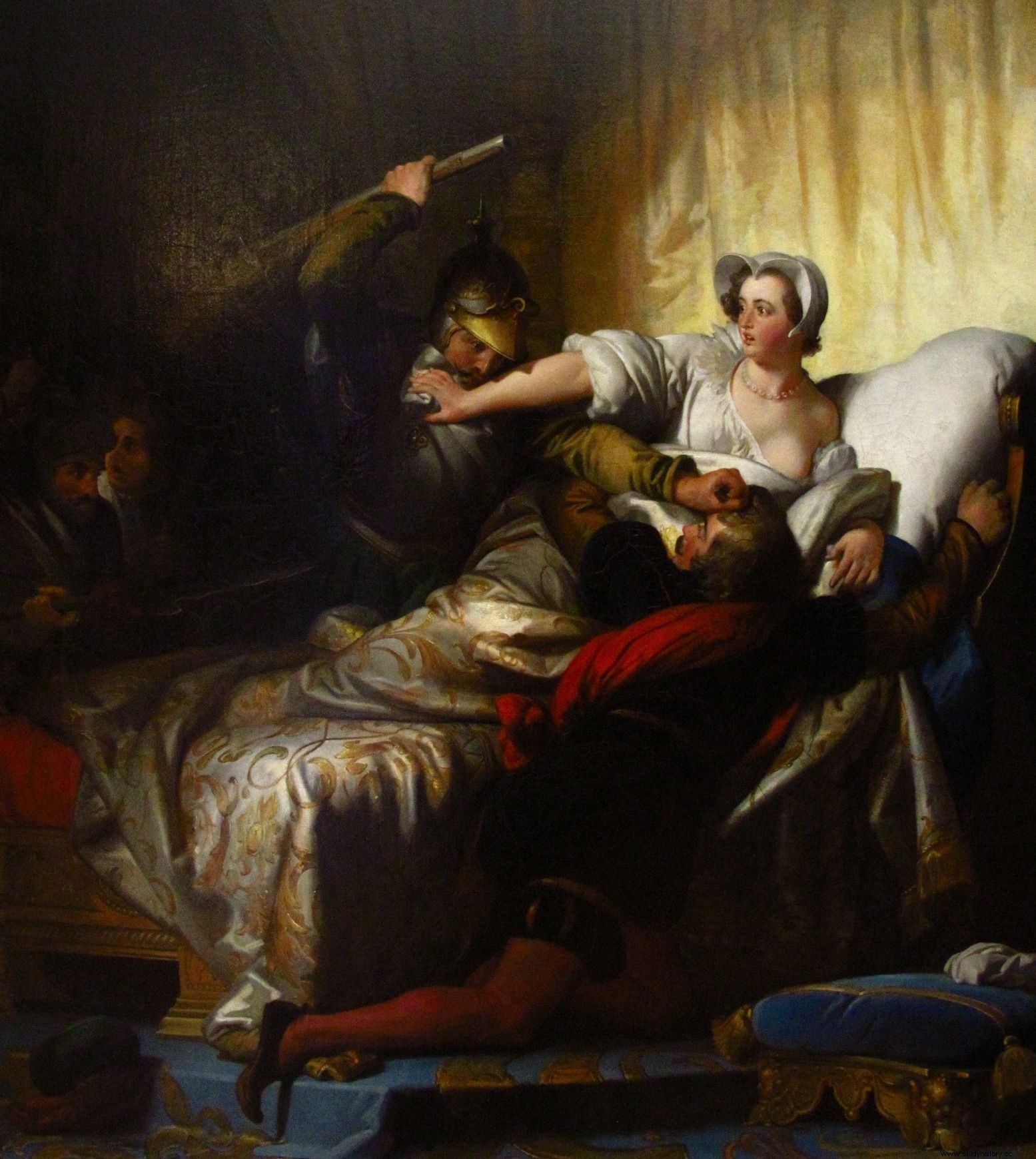
Marguerite, even in her own bedroom, was not safe when all hell broke loose. And it's no wonder she blamed her mother for it. In this painting by Alexandre-Évariste Fragonard from 1836, Margot shields from wetboys with her own breast of a Huguenot who has invaded her chamber (source:public domain).
Henry of Navarre and Franciszek decided to flee, and Małgorzata offered to help them, despite risking the revenge of the mother and the king:then the Medici's favorite, Henry of Valois. After their escape, she became a hostage of the fugitives' loyalty. As Nancy Goldstone writes:
She was cut off from news from the world, and it was not announced how long her imprisonment would take, whether it would lead to release, or maybe a lawsuit, and finally death. (...) Day after day it was stuck in loneliness and silence (...), devoid of hope for deliverance.
It was all the more difficult because Katarzyna turned the court against her. Knowing the recent example of Maria Stuart, Margot feared for her own life. However, she was more lucky - Franciszek forced her mother to release her sister.
And I can vouch for it with my life
In a dynamically changing family situation, in 1578, Francis was again imprisoned at court by his brother. And Margot was helping him out again.

Margot helped her younger brother escape twice. And every time the stakes were highest. A period drawing (source:public domain).
When Małgorzata confronted her mother the day before the escape, she gave her life that her brother would not run away. Even though it was she who lowered Franciszek from the window of her own chamber, she feigned ignorance. Her brother allegedly cheated her like the rest of the family. The only thing that saved her from the death penalty was the fact that she also managed to escape to a safe place.
Strength of evil to one
Soon Margot was reunited with her husband. It did not bring the expected results - she did not give birth to the desired heir, and she did not quite differ with the king of Navarre. In this situation - one of the few - Katarzyna took her daughter's side and tried to save their relationship. However, she was not acting out of the goodness of her heart.
In March 1585, Henry Bourbon, convinced that he had fallen victim to an attempted poisoning, openly contemplated condemning Margot to death. The mother, fearing a scandal, did not agree to her daughter's departure from her husband, even if staying at the court in Navarre would endanger Małgorzata's life.
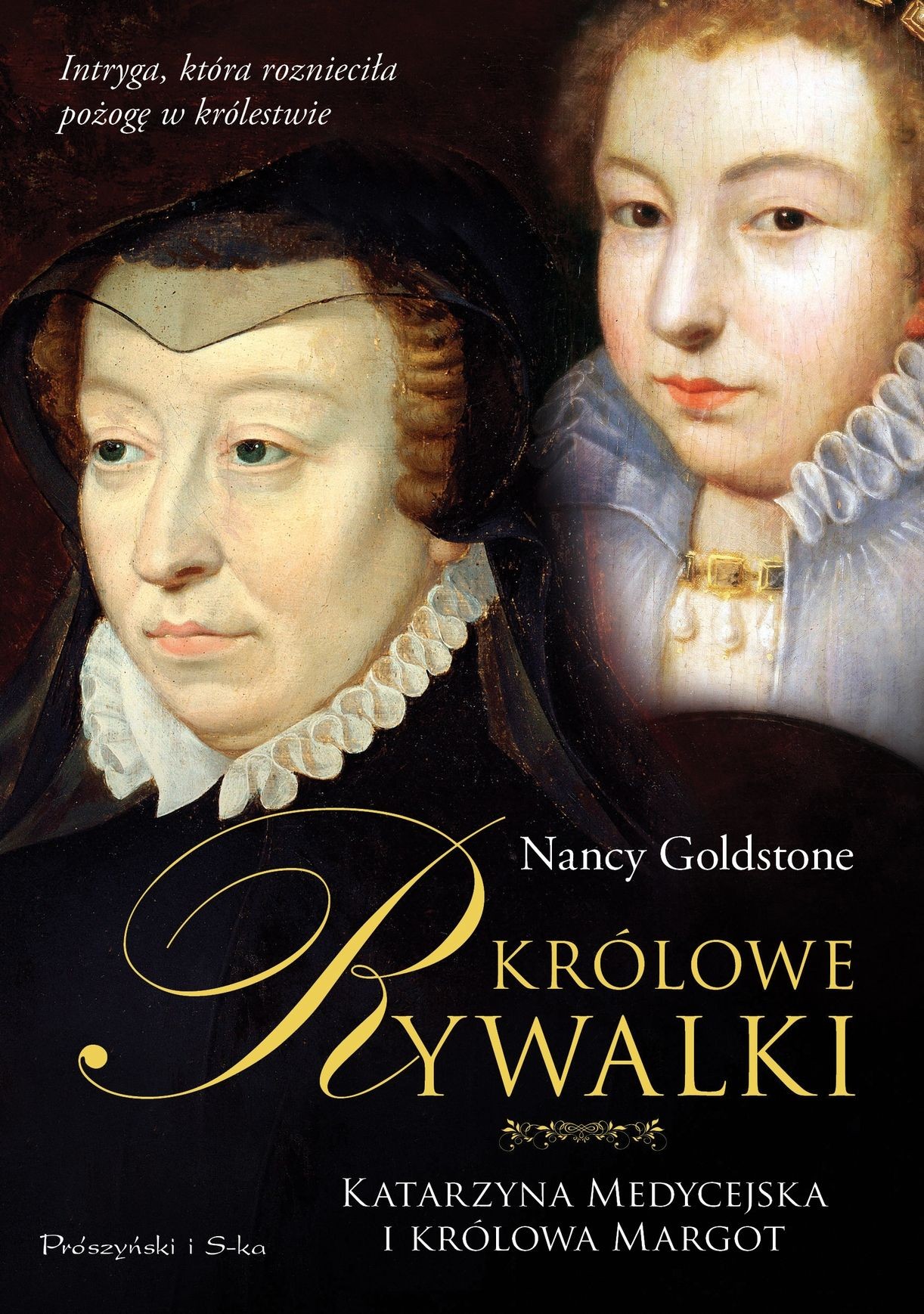
The article was based, among others, on the book by Nancy Goldstone titled "Queens rival. Catherine de Medici and Queen Margot "(Wyd. Prószyński i S-ka 2016).
Margot, also deprived of the support of Franciszek, who had died the year before, ran away from her husband and joined the Catholic League, led by her former love, Prince Guise. It was then that Katarzyna said that “God sent me this creature [Margaret] as a punishment for my sins, because it causes me new misfortunes every day. She is my curse in this world. ”
Let her die!
When Margot became seriously ill in February 1586, doctors believed that the 33-year-old woman would die. Mother and brother expressed such hope openly! The news of his recovery clearly disenchanted the first figures of France. Why? Well, because my daughter's existence collided more and more with Katarzyna's dynastic plans ...
Henry Bourbon had so far been only a rabbit of Navarre. Unexpectedly, however (after the death of Charles IX and the childlessness of Henry Valois), he became the heir to the French throne. This was not an ideal prospect for the country, considering that Henry Bourbon himself did not have any children. In this situation, Katarzyna started to tempt him with a completely new bride - her own granddaughter Krystyna (daughter of Klaudia). The line of succession would be saved from infertile Margot, and the crown would be returned to the temple of Catherine's descendant.
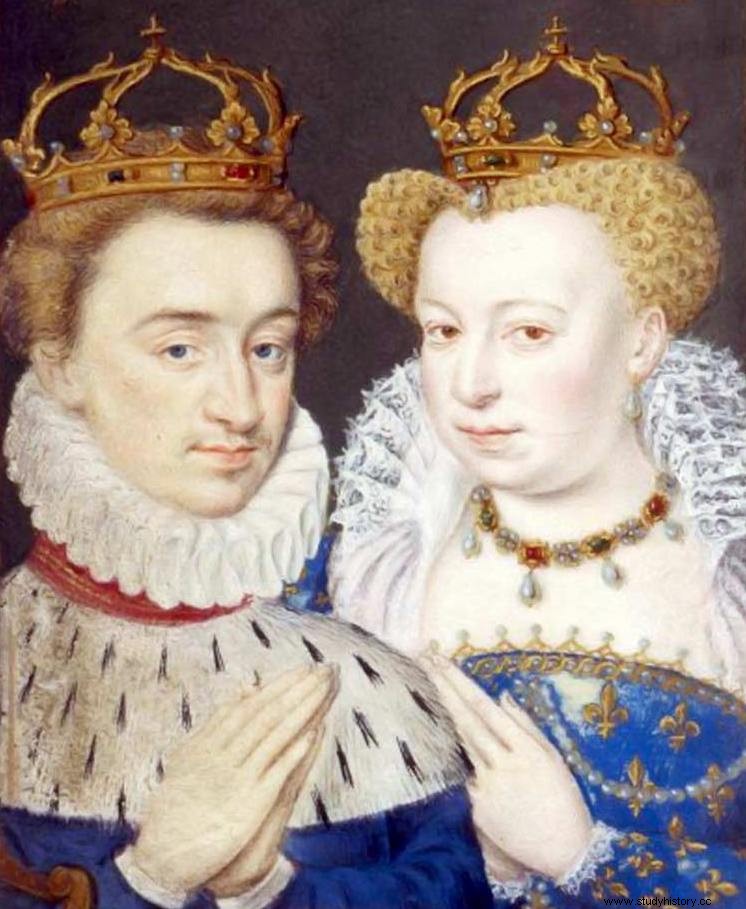
Looking at the picture, Margot might have thought that her husband was best in a portrait. A marriage, not right from the beginning, turned out to be deadly for her several times (source:public domain).
Of course, Margot's death was a precondition for a relationship. Catherine and Henry III were ready to help her descend to the tomb, had she not died of disease. As Duke de Guise wrote, they had "tragic ideas for Margaret, the details of which would make your hair bristle, sir".
A hair from death
Finally, the family managed to imprison Małgorzata in the sinister Usson castle, where - as we read in The Queen's Rivals - criminals and traitors were thrown in, so that they would never be heard again. Margot wrote pleading letters to Katarzyna, "who brought her into this world and wants to send her away" .
Henryk Walezy, wanting to prolong his sister's suffering, withheld the final announcement of the sentence until January 7, 1587. At that time, Katarzyna tried to force her son-in-law with her young granddaughter for her unhelpful daughter.
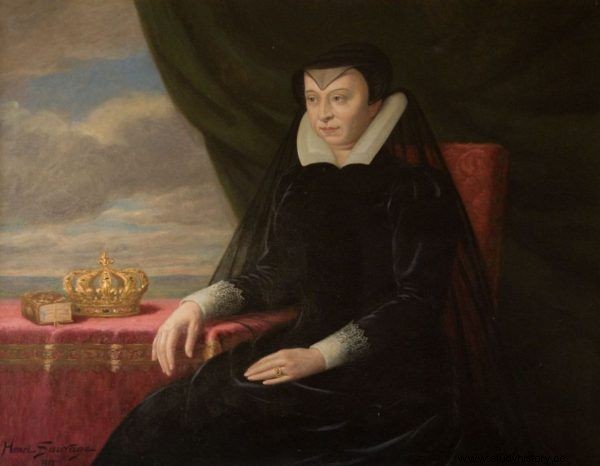
Catherine tried to bind the King of Navarre with her granddaughter, even at the cost of her daughter's life. Portrait of Henri Sauvage from 1901 (photo:Piero d'Houin dit Inocybe, license CC BY-SA 3.0).
Though Henry Bourbon had once considered murdering his wife, he rejected Medici's proposals. This is how he paid off the debt owed to his wife on the night of St. Bartholomew. By rejecting the Queen Mother's initiative, he saved Margaret from almost a certain death sentence. Henryk Walezy sentenced his sister "only" to life imprisonment.
Katarzyna died almost exactly 2 years later. In her last will, she turned out to be extremely generous to her relatives. But not for Margaret, the only surviving daughter she disinherited.
After the death of her mother and last brother, Margot became convinced that there could be a better life. She got along with her husband - despite the complicated past - and gave him a divorce in return for a very high financial compensation. She regained freedom and independence. Finally, she didn't have to watch her fear whenever she thought she heard her mother's voice.
Bibliography:
- Maciej A. Brzozowski, Divine. Italian women who seduced the world, Horizon 2016 sign.
- Benedetta Craveri, Mistresses and queens. Power of women, WAB 2005.
- Michel de Decker, Margot. The libertine queen, World of Books 2011.
- Nancy Goldstone, Queens of rivals, Prószyński i S-ka 2016.
- Jean Héritier, Catherine de Medici, PIW 1981.
- Memoires de Marguerite de Valois "la reine Margot", Éditions Ombres 1994.
- Jean-François Solnon, Catherine de Medici. The sinister queen of France, World of Books 2007.
